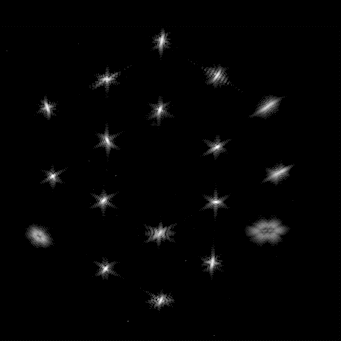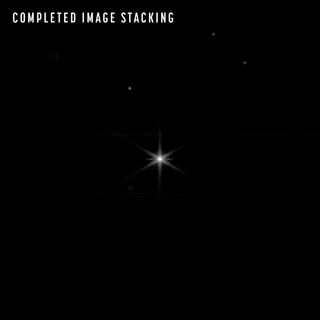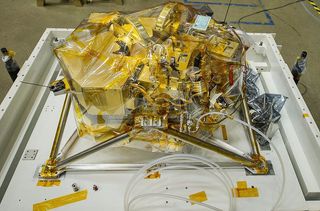James Webb Space Telescope is nearly halfway through its mirror alignment stages

Stars are getting sharper in the James Webb Space Telescope's field of view.
The team recently completed the third of seven planned steps to align the 18 hexagonal segments of Webb's mirror, marking nearly the halfway point in a complex, weeks-long process.
The second and third stages were respectively called segment alignment and image stacking, representing larger movements of the main mirror. Subsequent stages will make more minute adjustments to take an image of a distant star and gradually bring it to a single, precise point, NASA said in a statement Friday (Feb. 25).
Live updates: NASA's James Webb Space Telescope mission
Related: How the James Webb Space Telescope works in pictures
"We still have work to do, but we are increasingly pleased with the results we’re seeing," Lee Feinberg, optical telescope element manager for Webb at NASA's Goddard Space Flight Center in Greenbelt, Maryland, said in the same statement. "Years of planning and testing are paying dividends, and the team could not be more excited to see what the next few weeks and months bring."
During the segment alignment stage, Webb engineers refined an initial image of a star rendered 18 times. Engineers made minor adjustments to the main mirror and changed the alignment of Webb's secondary mirror. These repositionings were key to "overlapping the light from all the mirrors so that they can work in unison," Webb officials said in the update.

Then the third stage, image stacking, saw the focused dots reflected by each mirror stacked on top of one another. Photons of light from the individual segments were each rendered to the same location of a sensor on the telescope's near-infrared mirror (NIRCam).
Get the Space.com Newsletter
Breaking space news, the latest updates on rocket launches, skywatching events and more!
"The team activated sets of six mirrors at a time and commanded them to repoint their light to overlap, until all dots of starlight overlapped with each other," Webb officials said of image stacking.

Next will come the fourth phase of mirror alignment, called coarse phasing. That phase is already underway. NIRCam will be used to receive the light spectra (or wavelengths) from 20 pairings of the mirror segments. The process, Webb officials said, will allow engineers to correct small differences in heights between mirror segments.
"This will make the single dot of starlight progressively sharper and more focused in the coming weeks," NASA officials said, noting that the segments will gradually align to achieve an accuracy smaller than a single wavelength of light.
Follow Elizabeth Howell on Twitter @howellspace. Follow us on Twitter @Spacedotcom and on Facebook.
Join our Space Forums to keep talking space on the latest missions, night sky and more! And if you have a news tip, correction or comment, let us know at: community@space.com.

Elizabeth Howell (she/her), Ph.D., is a staff writer in the spaceflight channel since 2022 covering diversity, education and gaming as well. She was contributing writer for Space.com for 10 years before joining full-time. Elizabeth's reporting includes multiple exclusives with the White House and Office of the Vice-President of the United States, an exclusive conversation with aspiring space tourist (and NSYNC bassist) Lance Bass, speaking several times with the International Space Station, witnessing five human spaceflight launches on two continents, flying parabolic, working inside a spacesuit, and participating in a simulated Mars mission. Her latest book, "Why Am I Taller?", is co-written with astronaut Dave Williams. Elizabeth holds a Ph.D. and M.Sc. in Space Studies from the University of North Dakota, a Bachelor of Journalism from Canada's Carleton University and a Bachelor of History from Canada's Athabasca University. Elizabeth is also a post-secondary instructor in communications and science at several institutions since 2015; her experience includes developing and teaching an astronomy course at Canada's Algonquin College (with Indigenous content as well) to more than 1,000 students since 2020. Elizabeth first got interested in space after watching the movie Apollo 13 in 1996, and still wants to be an astronaut someday. Mastodon: https://qoto.org/@howellspace
